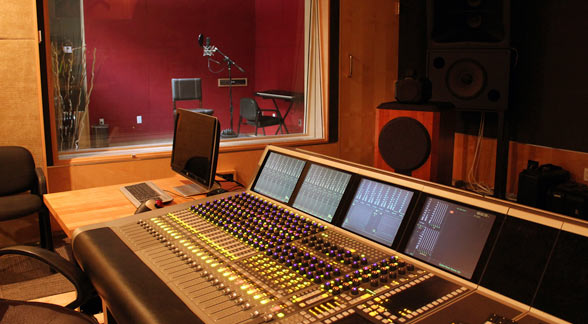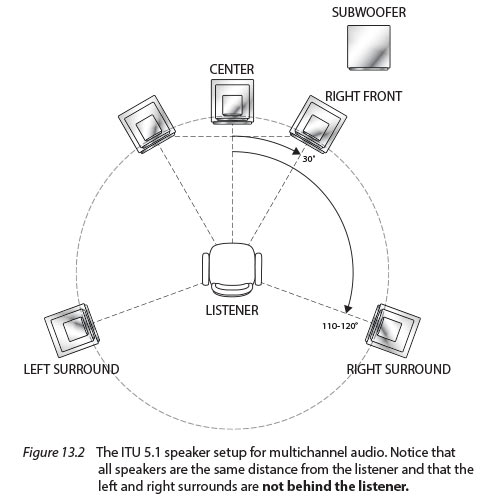Speaker Pointing
Here’s a pretty common question that should be of interest to audiophiles. When you set up your stereo or 5.1 surround speakers, should you toe the speakers in so that they are pointing directly at the listener or should they be facing straight forward? Well, as is the case with many things in audio, it depends. Let me start with how I set things up in my own facility and when I’m in a demoing at a trade show.
My mixing room is 30 ft x 24 ft x 14 ft. It’s a pretty good-sized room and far larger than most audio mixing rooms. There are two reasons for that. I wanted it to be somewhat representative of a typical home theater AND it needed to be this large so that that room could be used to mix independent, small budget films There are two completely separate playback systems available. The first is comprised of 5 B&W 801 Series III speakers mounted on anchor stands with a TMH Labs “Profunder” subwoofer and the second is a complete set of JBL speakers arranged in a THX theatrical layout. Let’s focus on the 5.1 surround system because that’s the one that I use for music.
First, they are all equidistant from the central mixing location…the sweet spot. In my case, the radius of the circle that surrounds the mixer is 7 feet…84 inches. Each speaker was carefully positioned to be on the perimeter of this circle, which is described in the ITU 5.1 Speaker Standard.
If you have a home theater setup and are deploying 5 speakers, then start with the center speaker. Ideally, this speaker should be exactly the same as ALL of the others. However, in practice the center speaker is often a horizontal speaker so that it avoids blocking the television monitor. That’s part of the reason that I don’t mix a lot of critical musical information in the center. But obviously this speaker is aimed straight at the center listening position.
Now let’s consider the left and right channels. They should be positioned along the perimeter of the same circle to avoid any phase/amplitude issues, they need to form an equilateral triangle with the center of the circle (plus or minus 30 degrees) AND they need to be pointed directly at the listener…NOT facing straight ahead.
The reason is that speaker has something called dispersion characteristics. This specification defines the angle at which the drivers are fully balanced and outputting the maximum sound. The dispersion characteristics of most speaker are optimal along the central axis…the zero degree line. As you move away from that line, “off axis” coloration and other non-linearities come into play.
So for maximum sound quality in both 2.0 channel stereo AND 5.1 surround systems, best practice says you should aim the speakers (all of them in the case of surround) towards the center. See the diagram below:
Figure 1 – A proper 5.1 surround speaker arrangement.


